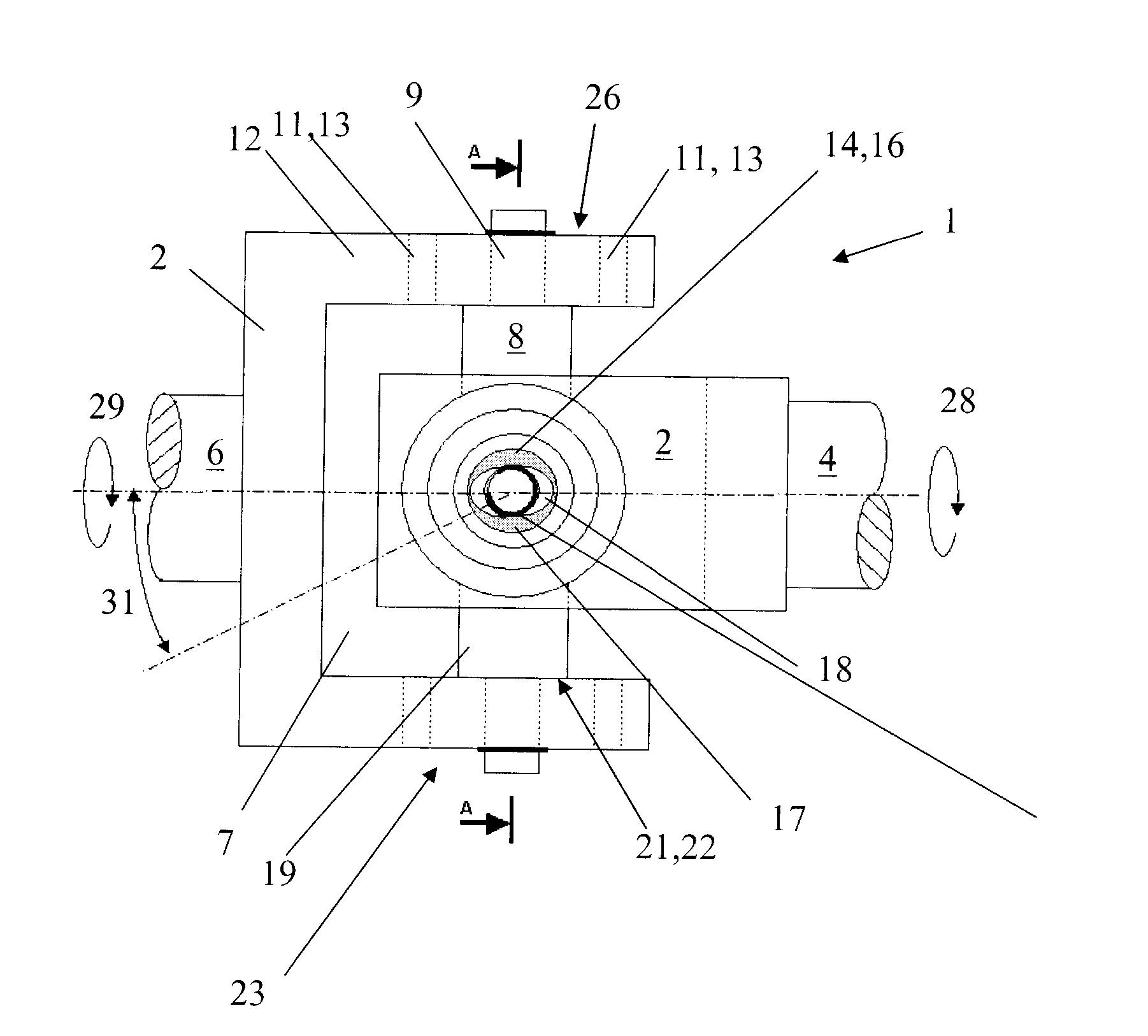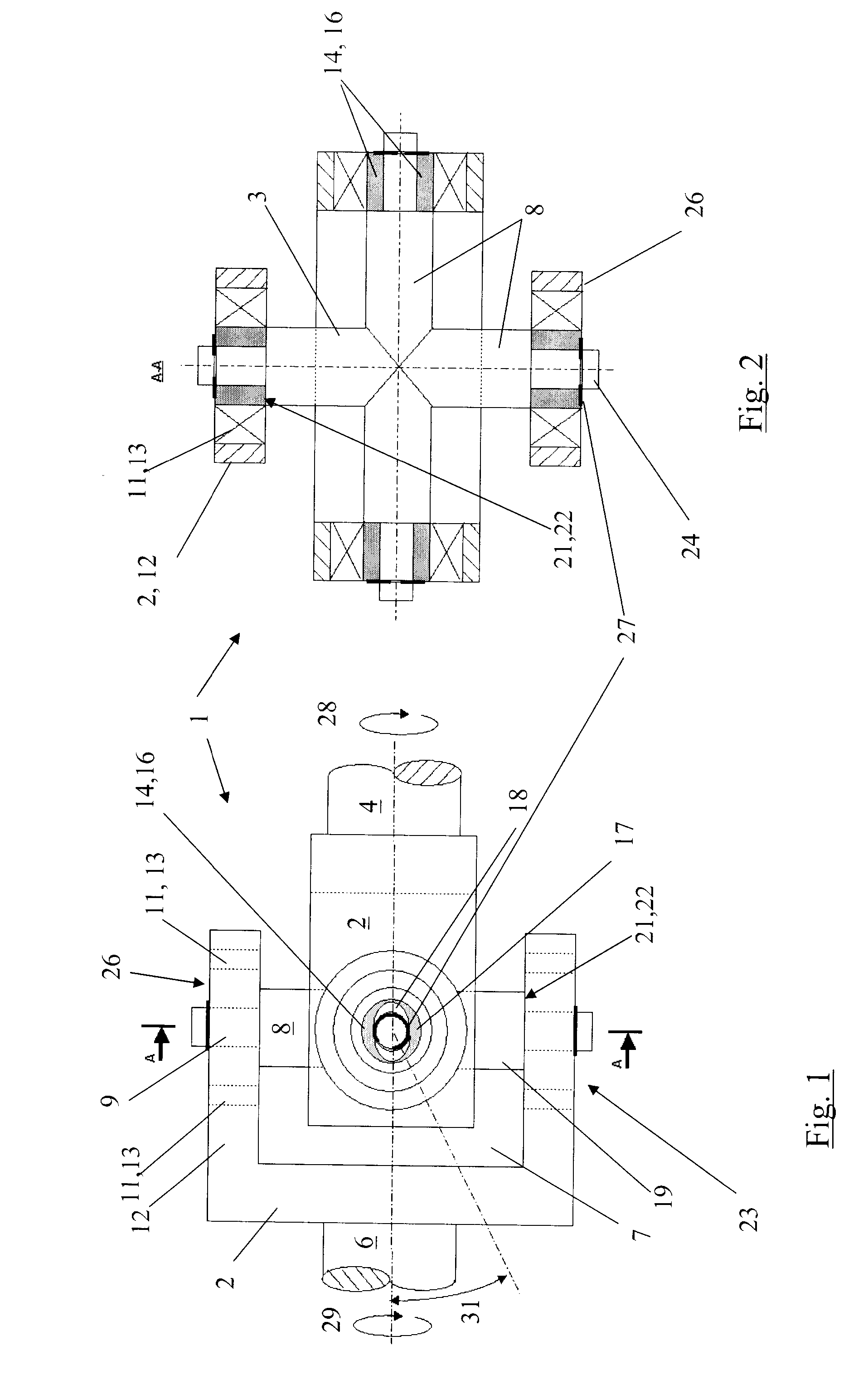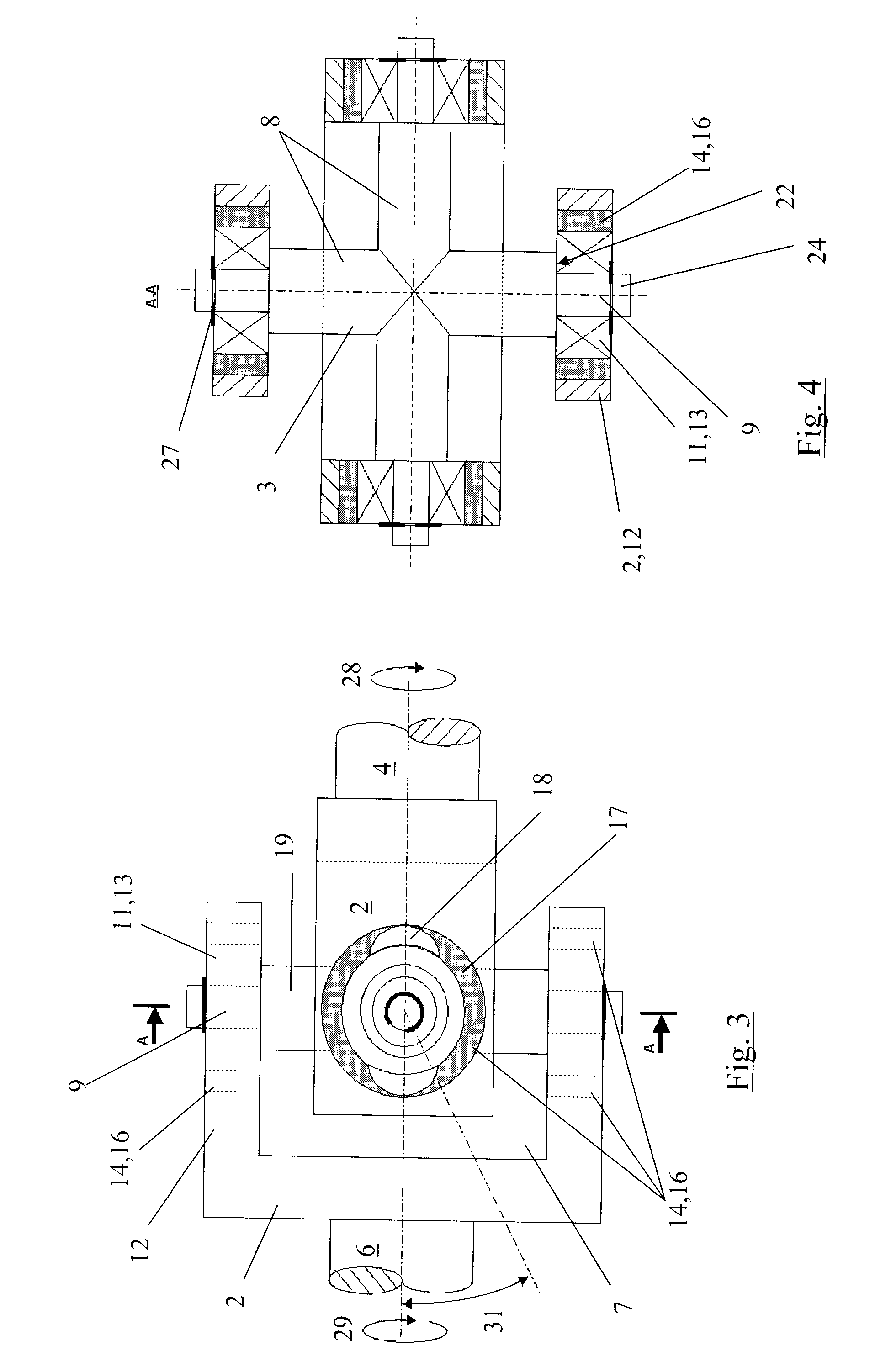Insulation For A Universal Cross Joint
a cross-joint, universal technology, applied in the direction of rotary bearings, rolling contact bearings, shafts and bearings, etc., can solve the adverse effects of acoustic or mechanical nature on the driver, damage to the drive train or the steering column, and no insulation whatsoever is effected against low-frequency vibrations, etc., to achieve large axial compliance of the joint, reduce vibration, and reduce vibration.
- Summary
- Abstract
- Description
- Claims
- Application Information
AI Technical Summary
Benefits of technology
Problems solved by technology
Method used
Image
Examples
Embodiment Construction
[0035] The FIGS. 1 to 4 show a universal joint 1 having two joint yokes 2 and a cross member 3. One of the joint yokes 2 is connected to a driven shaft 4 or drive shaft 4, the other joint yoke 2 being connected to the shaft to be driven 6 or driven shaft 6. The two joint yokes 2 are arranged twisted radially at an angle of 90° in relation to each other so that the two joint yokes 2 form an internal space 7. The joint cross 3 is disposed in the internal space 7. The cross member 3 is formed of two pin bearers 8 arranged orthogonally in relation to each other. The pin bearers 8 are pivoted in the respectively associated joint yokes 2. The pin bearers 8 crossing each other are rigidly connected with each other. The pin bearers 8 are pivoted, with their pins 9 that are arranged, respectively, at the end sides, in the associated joint yoke 2 or in their yoke arms 12 via bearings 11. The radially opposing bearings 11 of the respective joint yoke 2 each form a pair 13 of bearings. At least...
PUM
 Login to View More
Login to View More Abstract
Description
Claims
Application Information
 Login to View More
Login to View More - R&D
- Intellectual Property
- Life Sciences
- Materials
- Tech Scout
- Unparalleled Data Quality
- Higher Quality Content
- 60% Fewer Hallucinations
Browse by: Latest US Patents, China's latest patents, Technical Efficacy Thesaurus, Application Domain, Technology Topic, Popular Technical Reports.
© 2025 PatSnap. All rights reserved.Legal|Privacy policy|Modern Slavery Act Transparency Statement|Sitemap|About US| Contact US: help@patsnap.com



